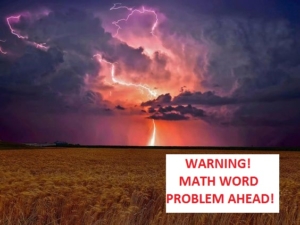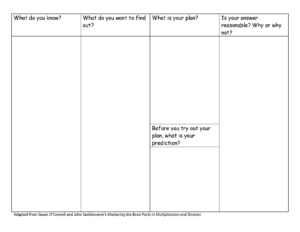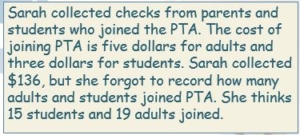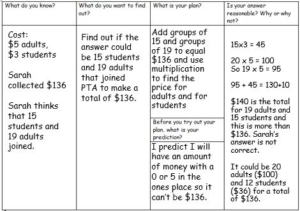Students of all ages have difficulty applying comprehension skills when reading and interpreting math word problems. Those of us who attended school before the year 2000 know that most of our instruction was computation with two word problems to solve at the end. Math instruction looks different today as it should. Years of computation without application to real world contexts have created masses of adults who readily admit they hate math, aren’t very good at it, or worse, are afraid of it.
We now purposely immerse students in understanding the context of a word problem to apply those computation skills, but with this can come frustration in not know what the problem is asking. Too many times students just grab the numbers in a problem and operate on them. To test this out, give this word problem to a fifth grader and tell them it is in another language. Ask the student to solve it, and watch what happens.
Siejg ejk wla 60 akylhl ssy 2 anklh, wyp whnzy pog aliy ume?
Did the student say the answer was 120? 62? 58? 30? No matter the age of the student, it seems their innate behavior is to add, subtract, multiply or divide without caring to read the situation. On a poorly written assessment that is solely focused on one operation, this strategy may work well, but on a well written assessment, this behavior will lead the student to undesirable results.
Fortunately there are graphic organizers that we can use to teach students how to comprehend a math word problem. One of those is called the KWPPR (Sue O’Connell, Mastering the Basic Facts).
The first column of the organizer poses the question: “What do you KNOW?” After reading the word problem, students identify what they know in the problem. In other words, they identify what the facts are that are important to solving the problem. Sometimes they are not sure what is important or not so they list all of the facts they find from the problem.
The second column poses the question: “What do you WANT to find out?” Students then identify what the question is. What is the problem asking? They write that in the chart.
The third column has two parts: “What is your PLAN?” and “What is your PREDICTION?” First, for the plan, students write what tools they will use or what operation or strategy they will use to solve the problem. For example, they might use partial products to solve a multiplication problem. Second, what is my PREDICTION? Estimating answers builds reasonableness so this is where students will predict what they think their answer may be close to or at least if the number will have a greater value or lesser value.
The fourth and last column poses the question: “Is your answer REASONABLE?” Sometimes teachers change that last column to “Does your answer make SENSE?” This is where students show their thinking and explain it. Fifth graders should be able to explain their thinking in a way that convinces others that they are correct and that they understood the problem.
Here is an example of how the KWPPR can be used to solve the following problem.
Try it out with students!



